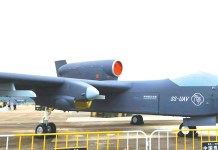China’s People’s Liberation Army will reduce its army strength by 50% emulating some of the NATO nations that have lean and mean armies. The reduction in China’s ground fighting force is expected to bring stability and structural transformation in the Chinese military.
Chinese Military Base in Djibouti: Beijing Explains Reason For Its Presence
The Chinese military power emphases on defeating the enemy without participating in an active war. Chinese military prefers defeating the enemy with terrific force at low cost. The Chinese military followed the second world war operational models and its maintenance was marked necessary by the Chinese policymakers. The PLA’s warfighting is affected by the leadership, for instance, Deng Xiaoping deviated from fighting debilitating wars that took the lives of fighting personnel.
The decline in warfare is one of the principle guiding PLA’s warfighting capabilities. The recent slowdown has not affected the Chinese economy which still marks double-digit growth which has led to the transformation of PLA. China’s military transformation is because of the shift in political leadership. Under President Xi, the Chinese military organized the joint arms warfare and changed the PLA into an upgraded fighting force.
The reduction in the size of the Chinese army will provide enhanced defence capabilities. It will also raise the importance of other services besides the ground fighting force. This is a significant move because the PLA has always been dominant in relation to other forces. With the help of this reduction in army size, the other services will also be able to display China’s strength within and outside its territory. China’s Military reforms will have a huge impact on the existing balance of power in the Asia-Pacific belt, particularly in India.
Looking at the Indian army which is the largest of the three armed forces and is regarded as manpower based fighting force. The main purpose of the army is to fight against insurgencies which makes it ground-based fighting force.
India’s budget for 2019 has completely reduced the Indian Army’s capital budget. Indian army has not taken any step in direction of reducing the size of the army. The implementation of One Rank One Pension from 2014 for defence accusations. In order to make the Indian army “efficient force”, there is a need for making significant reductions in the size of the army personnel.
The Indian Army Chief Bipin Rawat said during informal interaction that his military officers are studying the implication of the structural transformation which consists of the capacity to carry out conventional or hybrid warfare, and restructuring of the army headquarters. The transformation in Chinese PLA has motivated Indian army to study the changes which may bring a completely new way of tacking battles.
Currently, there are two options available with the Indian forces, one being the reduction in the size of the Indian Army and other is to rise defence expenditure to bear the burden of the firepower, logistics and military transportation. Even, the Indian Prime Minister raised concern for the key areas in defence preparation, strengthening joint operations, focus on military education, high level of defence management and accusation process. India needs to bring defence reforms to boost Indian armed forces capabilities to fight wars.
More News at EurAsian Times
- Indian Military Base in Vietnam To Protect Hanoi’s Territorial Interest
- Indian Military Base in Sabang can Strangle China at the Strait of Malacca
- Saudi Money, US Weapons, Israeli Intelligence Fuelling Arab NATO – Iran
- Will Ayni Airbase in Tajikistan Become India’s 1st Overseas Military Base?
- Indonesia Opens Another Military Base at Natuna Islands To Counter Aggressive China




